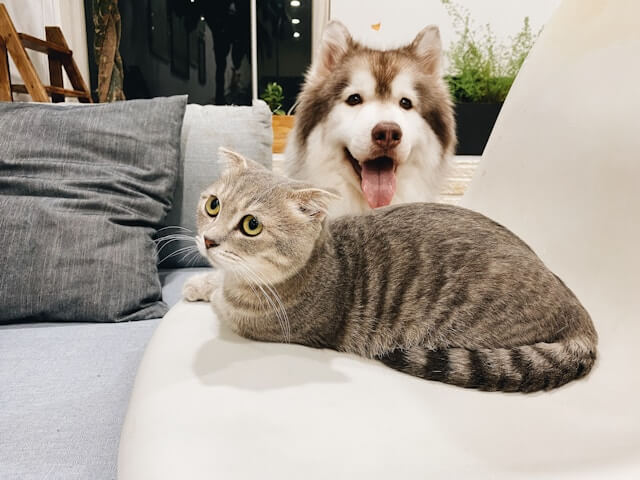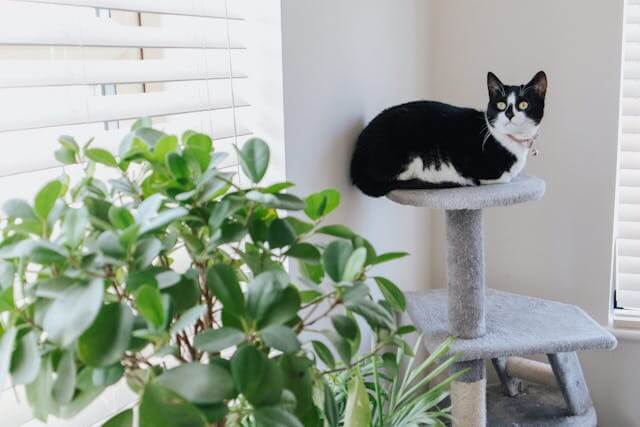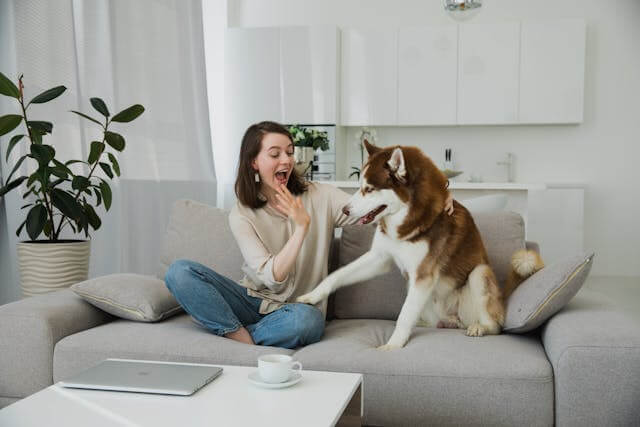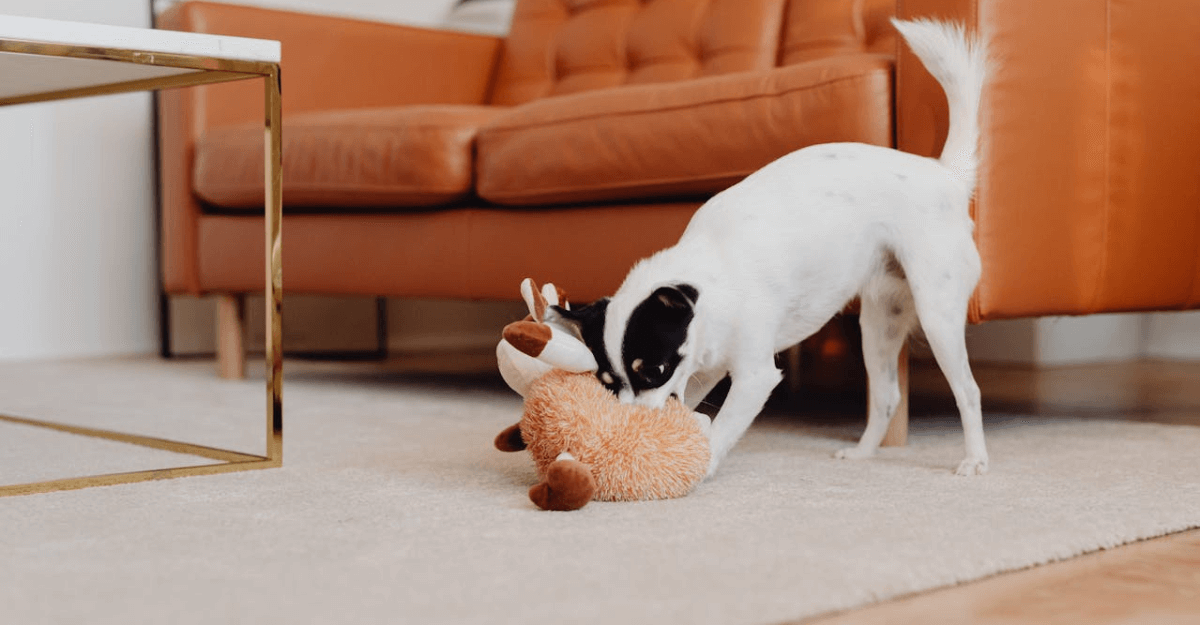Creating a pet-friendly living room is essential for those of us who share our homes with furry friends. I’ve gathered some practical tips to help make your space both comfortable for your pets and stylish for you. Skip wall-to-wall carpet since it traps pet hair, absorbs odors, and can be tough to clean. Instead, opt for easy-to-clean flooring like laminate or well-finished hardwood.
Another key tip is to choose furniture that can stand up to pet wear and tear. For instance, select couches or chairs that match your pet’s hair color to help disguise shedding. Pet-safe plants, such as the rubber plant or haworthia, can also enhance your living space without posing a risk to your pets.
Integrating pet-specific features can make a big difference. A wall-mounted cat bed or a hidden dog bed can give your pets their own cozy spots while keeping your living room tidy. Making thoughtful design choices will benefit both you and your pets, creating a harmonious home environment.
Understanding Your Pet’s Needs

Creating a pet-friendly living room involves recognizing your pet’s unique behaviors. From ensuring there’s enough room for them to move to providing cozy resting spots, it’s all about making the space comfortable for them.
Space for Movement
Pets need room to move around freely. In a living room, it’s important to arrange furniture in a way that leaves open pathways for them to navigate.
Keep furniture edges rounded to avoid injuries during playful moments. Rugs can provide traction to prevent slipping.
Also avoid cluttering the floor with too many items. Open spaces allow pets to play and explore.
Resting Areas
Every pet needs a cozy place to rest. Consider placing beds or cushions in spots where your pet likes to relax.
Observe your pets’ favorite napping areas and place soft bedding there. Materials that are easy to wash are best.
For pets who love to look out windows, setting up a resting spot with a good view can be ideal. Having multiple resting zones caters to their needs throughout the day.
Selecting Pet-Friendly Furniture

When picking furniture for a pet-friendly living room, it’s crucial to focus on durability and ease of cleaning. These two aspects help ensure that your furniture remains stylish and functional while accommodating your pets’ needs.
Durable Materials
Choosing furniture made from durable materials can make a big difference. Look for pieces crafted from materials that resist scratches, such as leather or tightly woven fabrics.
Wood furniture should have a strong finish to prevent damage from claws or teeth. Metal frames are also a good option since they’re sturdy and less likely to show wear and tear.
Consider furniture with reinforced seams and sturdy construction. Pieces designed to withstand heavy use will last longer and continue to look good even with pets jumping on them. Investing in durable materials can save you time and money in the long run.
Washable Fabrics
Another key aspect of pet-friendly furniture is washable fabrics. Look for sofas, chairs, and cushions with removable, machine-washable covers. This feature makes it easy to clean up spills, fur, and dirt.
Microfiber is a great fabric choice because it’s durable and easy to clean. It also doesn’t attract pet hair as much as some other materials.
Furniture with stain-resistant fabrics can also be a lifesaver.Crypton and other performance fabrics repel liquids and resist odors, making them perfect for homes with pets. Outdoor fabrics, like Sunbrella, are another good option because they’re designed to withstand the elements and are easy to clean.
Having washable fabrics ensures that your living room stays fresh and clean, even with pets around.
Maintaining a Clean Living Space

When you have pets, keeping your living room clean requires thoughtful choices and consistent effort. Selecting surfaces that are easy to clean can make a big difference, as can establishing a regular cleaning routine.
Easy-to-Clean Surfaces
Choosing the right materials for your living room is crucial. I prefer leather or faux-leather sofas because they don’t trap pet hair and are easy to wipe down. Similarly, microfiber furniture is a good option. It’s resistant to stains and very durable.
For flooring, hardwood, tile, and laminate are better than carpets. These surfaces don’t harbor allergens and are easy to mop. Sturdy and washable rugs, like those made of nylon or wool, can add warmth and are easier to clean than wall-to-wall carpeting.
Another tip is to use slipcovers on your furniture. They can be easily removed and washed whenever needed. This can keep your main upholstery protected and clean.
Regular Cleaning Routine
Establishing a regular cleaning schedule is essential. I vacuum the living room at least twice a week to keep pet hair and dander under control. Make sure to vacuum carpets, rugs, and upholstered furniture.
Dusting surfaces and wiping them down with a damp cloth can prevent allergens from building up. Lint rollers and pet hair removers are handy tools for quickly picking up fur from furniture and clothing.
Also launder pet bedding and blankets frequently. Washing these items every week can cut down on odors and keep the living room smelling fresh.
For accidents or spills, use an enzyme-based cleaner. These products break down the proteins in urine, vomit, and feces, removing both stains and odors effectively.
Ensuring Pet Safety

When creating a pet-friendly living room, safety is crucial.Take several steps to ensure your pets are always in a safe environment.
First, make sure to keep small objects out of reach. Pets, especially young ones, might swallow items like buttons or coins.
Cover electrical outlets and secure cords. Pets can chew through wires, which is dangerous.
Choose non-toxic plants. Many common houseplants can be harmful to pets if ingested.
To prevent accidents, use quality pet gates. This helps control where your pets can roam within the house.
Next, opt for sturdy furniture without sharp edges. This reduces the risk of injuries, especially for very active pets.
Cleaning supplies and hazardous materials are stored out of reach. Ensuring they are in locked cabinets prevents accidental poisoning.
Also make sure windows and balconies are secure. Screens and railings must be in good condition to prevent falls.
Pet-friendly flooring is another consideration. Non-slip surfaces like carpets or rugs reduce the chances of slipping and getting hurt.
Regularly check for any small spaces where a pet could get trapped. Ensuring these spots are sealed off keeps my pets safe.
Creating Integration Zones

When designing a pet-friendly living room, one key aspect is creating integration zones where pets can comfortably coexist with family members.
Dual-Purpose Furniture
I recommend using dual-purpose furniture. For example, a storage bench can hold pet toys while serving as additional seating for guests.
Dedicated Play Areas
Dedicated play areas are essential. I’ve found that setting up a corner with pet-friendly toys and a cozy bed allows pets to feel included without taking over the entire room.
Integrated Feeding Stations
Creating an integrated feeding station can minimize mess. A small table with built-in bowls or a drawer that pulls out for feeding time helps keep the living space tidy.
| Item | Purpose |
|---|---|
| Storage Bench | Holds toys, provides seating |
| Play Corner | Keeps pets engaged |
| Feeding Station | Contains meal mess |
Stylish Pet Furniture
Choose stylish pet furniture that fits the room’s decor. Use pet beds and scratching posts that match my living room’s color scheme to blend seamlessly into the environment.
Mudroom or Entryway Pass-Through
If you can, create a mudroom or entryway pass-through. I find this area useful for cleaning paws and storing leashes and outdoor gear, preventing dirt from spreading into the living room.
By thoughtfully planning these zones, it’s possible to create a space where everyone in the household, including pets, feels at home.
Creating a pet-friendly living room doesn’t have to mean sacrificing style
or comfort. By following these 9 expert tips, you can design a space that is
both welcoming for your furry friends and aesthetically pleasing. From
choosing durable and easy-to-clean fabrics to incorporating smart storage
solutions for pet toys, these practical and budget-friendly ideas will help
you achieve a harmonious home. Remember, a pet-friendly living room is all
about finding the right balance between functionality and beauty, ensuring
that both you and your pets can enjoy a comfortable, stylish, and happy
living space.



